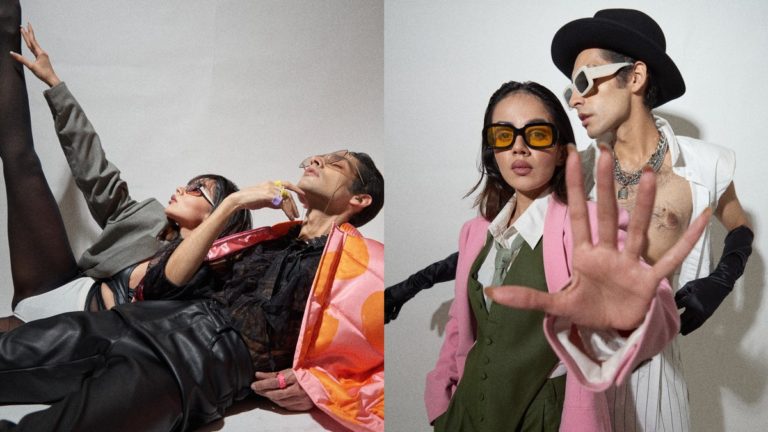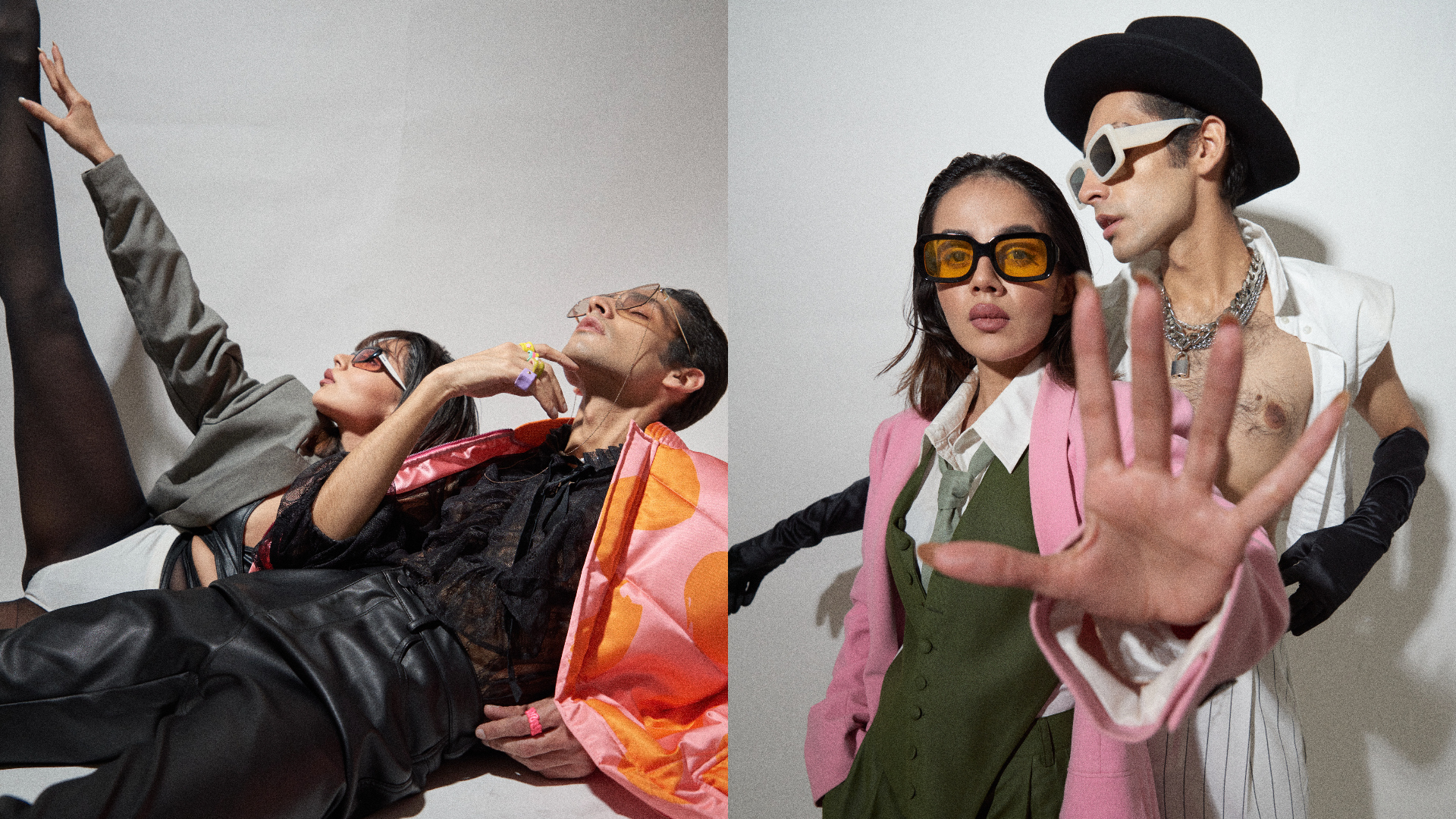

When Indian groom Shardul Kadam wore a mangalsutra – a necklace that is traditionally worn by the bride – on his wedding day, he was aggressively trolled for months.
“People trolled me for wearing a mangalsutra by saying wear a saree and nose ring also, without realising that even in the pre-Victorian era, colourful outfits, gold jewellery and the concept of making yourself beautiful was not determined by gender,” Shardul Kadam told VICE.
In South Asia, especially India, expressions of non binary identity can become targets of trolling and homophobic hate speech.
But for Kadam, Instagram couples like Komal Pandey and Siddharth Batra send a clear message that despite the trolling, Indians do not have to restrict themselves to the social lens of gender.
With over a million followers on Instagram, Komal Pandey is an established fashion vlogger in her own right. However, videos with her boyfriend Siddharth Batra, where the couple is seen exchanging everything from clothes to kisses, truly stand out.
Together, Batra and Pandey are are twinning in androgynous looks and normalising the concept in cis-heteronormative spaces while they’re at it. “When I started wearing blazers and dad shirts, I didn’t even know it was called androgynous fashion. I just wanted to wear clothes that made me feel powerful, which these pieces did,” Pandey tells VICE.
In February, when internationally renowned Indian designer Sabyasachi shared his new collection with American luxury brand Bergdorf Goodmans, he was also excessively trolled for featuring a man wearing a dress and heels.
Even Ranveer Singh, one of India’s most popular Bollywood actors, faced homophobic slurs for wearing heels during a photoshoot.
“In Persian history, which India is heavily influenced by, heels were seen as a high status symbol… for men,” Payal Arora, an anthropologist, author and professor at Erasmus University, Rotterdam, tells VICE. “They were worn by men to sit on horse stirrups and were a symbol of power and warfare for the elite”. Arora points out that heels were made for men and, in fact, appropriated by women, instead of the other way around. While this nullifies the argument that high heels are only worn by women, Arora points out that years of patriarchal conditioning have led to the rise of regressive beliefs in India.
For Batra, his motivation to be a “rule-wrecker”, as well as his maximalist and fluid approach to fashion comes from a childhood where he had the privilege and freedom to express his identity.
“Right from my childhood, my family never told me that something was not for me just because it went outside the quintessential male spectrum,” says Batra. “I was always encouraged to play games like cricket as well as kho kho or [with] kitchen [toys] growing up, even though these are traditionally seen as ‘girls’ activities in India.”
While women are relatively less abused for sporting traditionally masculine items, they regularly face trolling for their choice of clothing.
While Komal’s videos generally veered towards themes of affordable fashion, body and sex positivity, collaborating with her boyfriend allowed Pandey to experiment with blurring gender lines.
He also credits his genderless fashion identity to his fashion education, and was heavily inspired by a blog called Kate Loves Me. “I would see Pelayo Diaz, the blogger behind Kate Loves Me, wear accordion pleated skirts with a blazer and a fedora, and I felt it was a great blend of how I saw myself getting dressed everyday.”
While Batra began his journey of content creation working at MensXP, an Indian male-focused fashion and lifestyle platform, he began establishing his individuality as a creator in 2019 by launching a video series that showed men how to do their own makeup.
“I would see my mum and [female] friends wearing concealer and foundation, so my inlet to beauty began when I started experimenting with their makeup,” he said. “I began my #guybeauty series with the intention of sharing my own beauty routine, and promoting the idea of beauty for all. But after my first video got more than 200,000 views, even when I barely had 17,000 followers, I realised I could [use it to] drive a conversation in my community that could lead to an evolution in people’s self-inflicted ideologies.”
Batra is no stranger to trolls, having faced homophobic hate speech himself. But instead of letting it faze or discourage him, he takes the criticism as a sign to be more sensitive towards Indian women or members of the LGBTQ community who regularly face violent atrocities.
“I was recently wearing Komal’s skirt, and she was wearing my suit,” he says. “I was completely ogled at. That’s not even one percent of what women in our country go through everyday, which is something I’ll never be able to understand even if I wear their clothes. There are bigger problems in this world than what I choose to wear.”
While Batra and Pandey have faced their fair share of trolling, they have managed to develop a thick skin to overcome it.
“Sometimes people don’t understand us because they don’t come from the same place as us, or are conditioned through movies, books or society [to believe that what we’re doing is wrong]. But we have to be empathetic and work towards breaking it,” said Pandey.
Batra agrees. “Our society has taught us to be people who blend in, even if it makes us mediocre. I hope I can inspire others to choose to stand out and be whoever they want to be if it’s true to themselves.”
Despite the trolling, as anthropology expert Arora points out, these creators have been able to build an army of followers to defend their identities. “You don’t cultivate an audience by destroying things. You get one by creating solidarity. In this case, they use the resonance that Bollywood references and pop culture icons enjoy to challenge patriarchal norms.”
Using the example of Neel Ranaut, a genderless fashion creator who hails from a conservative Indian village, Arora adds that the success of this content is a testament to the power of fashion as a communication tool.
“The diversity of storytelling and audiences that social media allows has laid the path for gender free fashion,” said Arora. “Now, creators are catering to a generation that expects the personal to be political.”
Correction: This story inaccurately used the term gender bending. We regret the error.